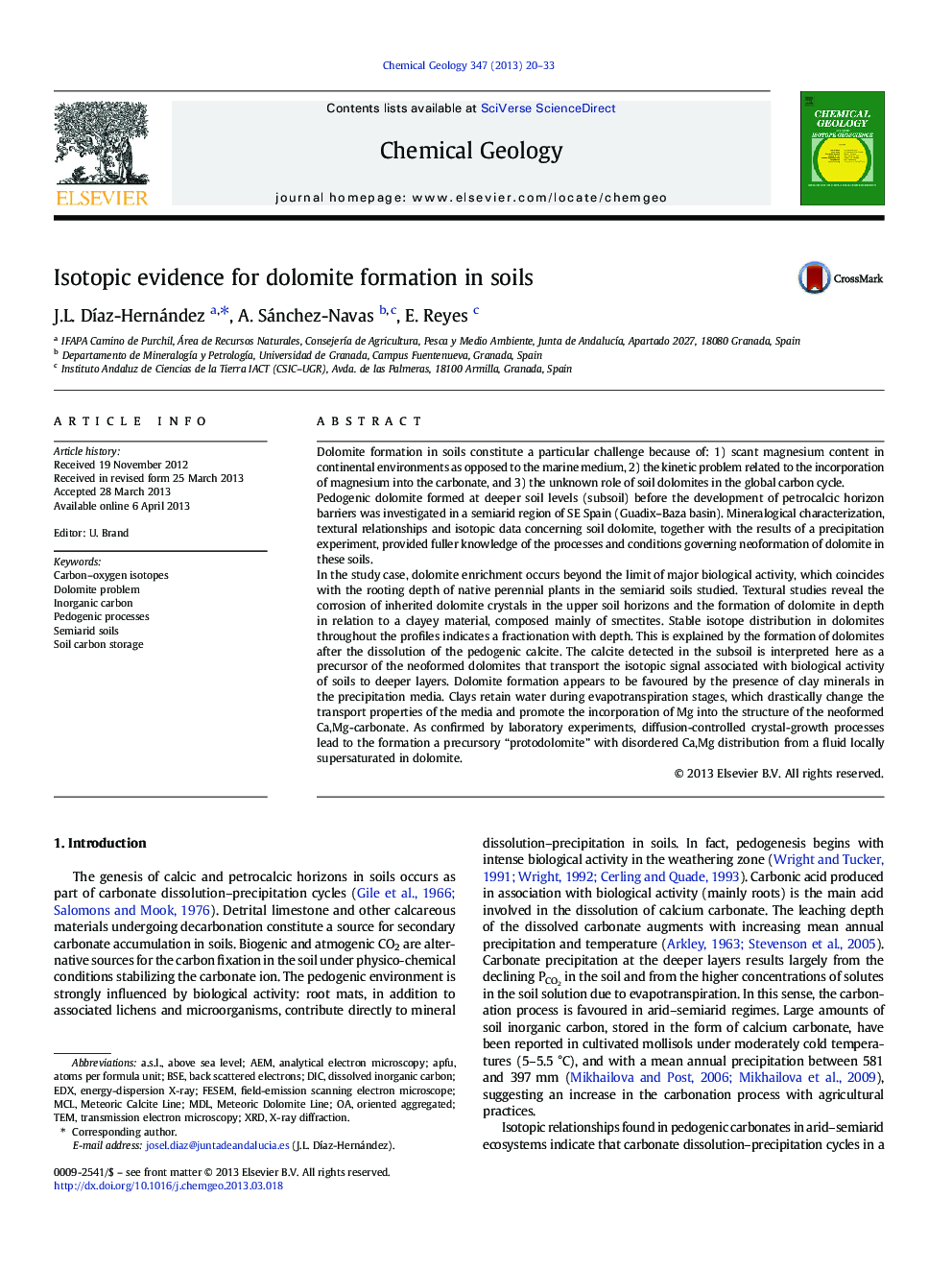| کد مقاله | کد نشریه | سال انتشار | مقاله انگلیسی | نسخه تمام متن |
|---|---|---|---|---|
| 6436947 | 1637621 | 2013 | 14 صفحه PDF | دانلود رایگان |
- Neoformed dolomite appears in semiarid soils below the petrocalcic horizon.
- An isotopically light dolomite forms after dissolution of pedogenic calcite.
- Smectite acts as a catalyst for dolomite/protodolomite precipitation.
- Pedogenic dolomite must be taken into account in carbon-soil balances.
Dolomite formation in soils constitute a particular challenge because of: 1) scant magnesium content in continental environments as opposed to the marine medium, 2) the kinetic problem related to the incorporation of magnesium into the carbonate, and 3) the unknown role of soil dolomites in the global carbon cycle.Pedogenic dolomite formed at deeper soil levels (subsoil) before the development of petrocalcic horizon barriers was investigated in a semiarid region of SE Spain (Guadix-Baza basin). Mineralogical characterization, textural relationships and isotopic data concerning soil dolomite, together with the results of a precipitation experiment, provided fuller knowledge of the processes and conditions governing neoformation of dolomite in these soils.In the study case, dolomite enrichment occurs beyond the limit of major biological activity, which coincides with the rooting depth of native perennial plants in the semiarid soils studied. Textural studies reveal the corrosion of inherited dolomite crystals in the upper soil horizons and the formation of dolomite in depth in relation to a clayey material, composed mainly of smectites. Stable isotope distribution in dolomites throughout the profiles indicates a fractionation with depth. This is explained by the formation of dolomites after the dissolution of the pedogenic calcite. The calcite detected in the subsoil is interpreted here as a precursor of the neoformed dolomites that transport the isotopic signal associated with biological activity of soils to deeper layers. Dolomite formation appears to be favoured by the presence of clay minerals in the precipitation media. Clays retain water during evapotranspiration stages, which drastically change the transport properties of the media and promote the incorporation of Mg into the structure of the neoformed Ca,Mg-carbonate. As confirmed by laboratory experiments, diffusion-controlled crystal-growth processes lead to the formation a precursory “protodolomite” with disordered Ca,Mg distribution from a fluid locally supersaturated in dolomite.
Journal: Chemical Geology - Volume 347, 6 June 2013, Pages 20-33
